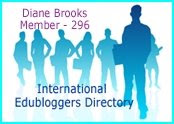Another great Web 2 tool for the classroom is
Creaza. This site has several different parts to it requiring one login.
Mindomo: With this tool you can make mindmaps for visual learning, developing creativity and problem solving. You can organise and present your ideas visually.
Cartoonist: with this tool you can create your own cartoons. You can use their professional backgrounds, characters, props, images and text. You can also create title cards, speech balloons, thought balloons, or scream balloons. You can also combine all this with your own images.
MovieEditor: MovieEditor is an online video editor to create movies, complete with professional-looking titles, transitions, effects, animation, music, and narration. It is a timeline-based video editor, similar to traditional desktop-based video editing tools. The difference - MovieEditor is web-based and a web browser with Adobe Flash gives you instant access! You can export the result to your favourite media player, or directly to YouTube or Facebook.
AudioEditor: AudioEditor is an online audio editor for recording, slicing, and mixing audio. It is useful if you want to publish the finished sound clip as a podcast.
This tool follows established conventions for sound editing, allowing you to place sound files along a timeline, across several channels.
You can also record sound and add it as a track on top of your final edit.
 about classrooms of the future which is well worth watching.
about classrooms of the future which is well worth watching.





 Web site: http://ictineducation.webege.com/
Web site: http://ictineducation.webege.com/









